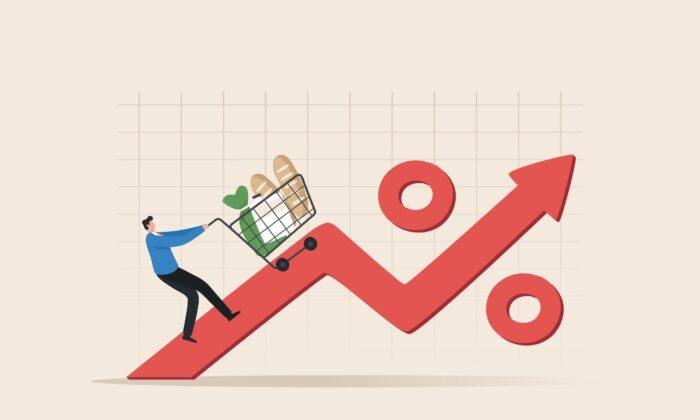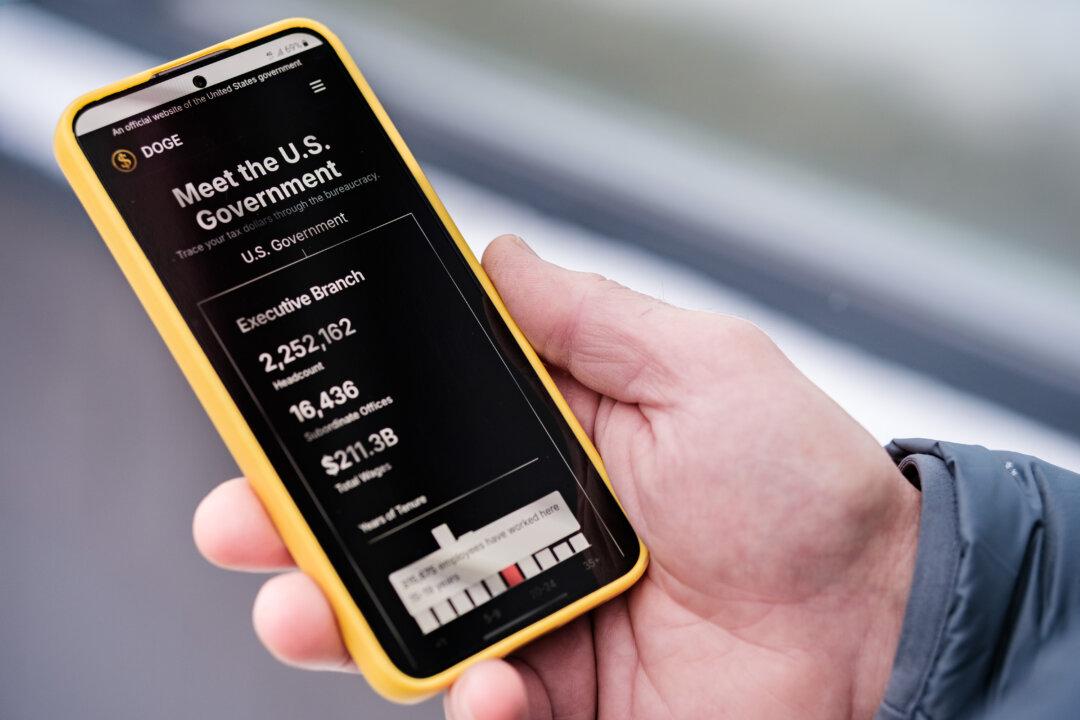Commentary
This morning’s release of April’s Consumer Price Index (CPI) data showing inflation had fallen from 5.0 percent in March to 4.9 percent annually was received as a disappointing reminder that inflation, while down from highs in the summer of 2022, is far from behind us.
Yet there is increasing evidence to support the suspicion that CPI does not represent the actual inflation that Americans face as they struggle with rising prices for everything they use, including education, health care, housing, food, and energy. The felt experience of many consumers is that CPI underestimates the real rising cost of living. This is not just an emotional or subjective reaction. It turns out that private sector and other data, such as regulatory filings, undermine the message and the data provided by the
Bureau of Labor Statistics (BLS), the U.S. government entity that manages the CPI.
Take, for example, the cost of higher education. The CPI
figures from the BLS indicate that inflation in college tuition and fees has been mild, at 2.4 percent per year since 2013, and—remarkably, given the general price inflation we’ve experienced—just above 2.2 percent per year on average for the past two years through March 2023.
Yet, according to
data from the National Center for Education Statistics (NCES), the average annual cost for a full-time student at a four-year degree-granting institution is up 125 percent since 2000. This translates to 4.1 percent average annual inflation over 20 years. Public institutions have fared worse, with costs up 147 percent, while the average annual costs at private institutions are “only” up 112 percent. These NCES figures go through 2021. According to
figures from the Brown Center on Education Policy at Brookings, academic inflation is running hotter recently, at 5.3 percent in the 2020–21 academic year and 8.5 percent in the 2021–22 academic year.
The cost of medical care provides another illustration of the disconnect between the government’s data and private-sector analysis.
The BLS CPI
data for medical care suggest that inflation has been moderate at 2.6 percent since 2013, and—again surprising—just below 2.2 percent per year on average for the past two years through March 2023. On the other hand,
trend analysis from PwC’s Health Research Institute shows that since 2006, medical care costs have increased by 220 percent in total, representing anaverage annual rate of 7.6 percent. While not precisely a measure of inflation, the PwC analysis measures the “percentage increase in the cost to treat patients from one year to the next, assuming benefits remain the same.” For patients, the implications are the same. The analysis measures the increase in costs for the same services year after year, which are rising at three times what CPI indicates.
The story is the same for housing. The CPI
data indicate that the cost of shelter is up 8.2 percent for the 12 months through March. Over the longer term, shelter is up 15.5 percent in total since April 2020, which represents just under 5.1 percent annually. Five percent per year is a lot, but still substantially underrepresents private-sector analysis of similar housing costs. For example, the S&P/Case-Shiller U.S. National Home Price
Index reveals that since April 2020, home prices are up 35 percent, or 11.1 percent annually. While not completely an apples-to-apples comparison, this is more than double the closest CPI category. Whether 5 percent or 11 percent or somewhere in between,
median nominal wage growth, while recently increasing to around 6 percent, has been well below either level for much of the past three years. When housing prices rise substantially faster than income, homes become liabilities rather than assets, as we saw in the housing bubble which led to the global financial crisis of 2008–09.
I wrote earlier in the year for
The Epoch Times describing how CPI was underrepresenting the rising costs of
electricity and
food. In these cases, I looked at regulatory applications from regional power companies for double-digit price increases in 2023 and historical same-good purchasing data from Amazon Prime, respectively. I won’t repeat that here, but the upshot of each analysis was again the same. They confirm that inflation for both energy and groceries is running, and continues to run, much higher than the CPI data indicate, and, of course, higher that the CPI aggregate itself.
I wrote at the time that “aggregate CPI figures underrepresent what the American consumer is experiencing in two important and fundamental ways. First, the costs most important to most Americans, namely, food, energy, and shelter, have risen much higher than aggregate CPI. Second, the CPI figures (which compare one year against the previous) tend to hide the ‘base effects’ of inflation, meaning the compounding of rising prices over multiple years. The result of both is to distort and underestimate the real impact on [Americans’] shrinking wallet.”
And so now I’m raising a third fundamental issue with the BLS data. CPI is simply not telling the whole story. Especially not the one being lived out by struggling working- and middle-classhouseholds trying to provide for their families. Inflation is, and will remain, much worse than what the government’s data indicate.
Views expressed in this article are opinions of the author and do not necessarily reflect the views of The Epoch Times.





